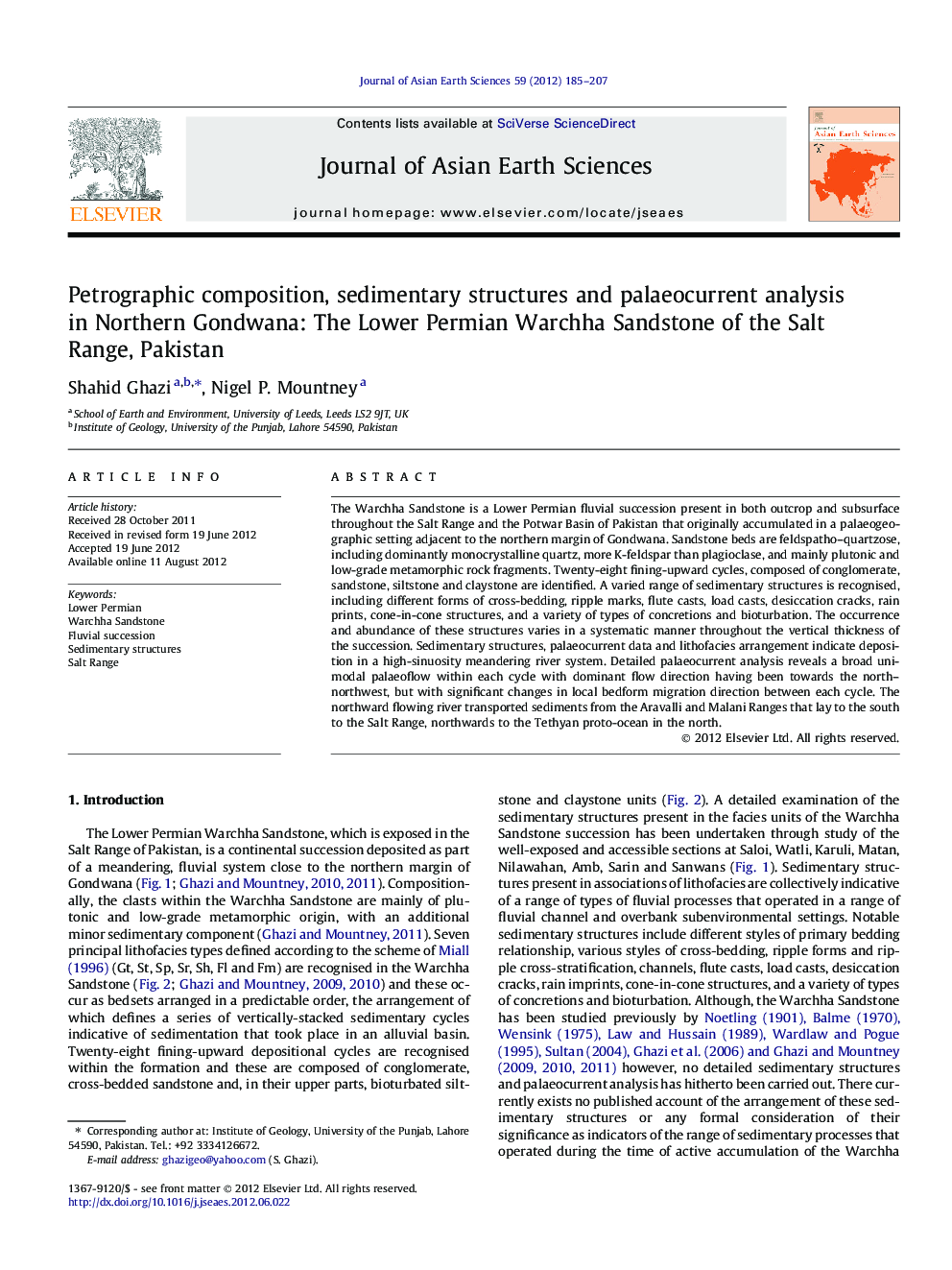| Article ID | Journal | Published Year | Pages | File Type |
|---|---|---|---|---|
| 4731365 | Journal of Asian Earth Sciences | 2012 | 23 Pages |
The Warchha Sandstone is a Lower Permian fluvial succession present in both outcrop and subsurface throughout the Salt Range and the Potwar Basin of Pakistan that originally accumulated in a palaeogeographic setting adjacent to the northern margin of Gondwana. Sandstone beds are feldspatho–quartzose, including dominantly monocrystalline quartz, more K-feldspar than plagioclase, and mainly plutonic and low-grade metamorphic rock fragments. Twenty-eight fining-upward cycles, composed of conglomerate, sandstone, siltstone and claystone are identified. A varied range of sedimentary structures is recognised, including different forms of cross-bedding, ripple marks, flute casts, load casts, desiccation cracks, rain prints, cone-in-cone structures, and a variety of types of concretions and bioturbation. The occurrence and abundance of these structures varies in a systematic manner throughout the vertical thickness of the succession. Sedimentary structures, palaeocurrent data and lithofacies arrangement indicate deposition in a high-sinuosity meandering river system. Detailed palaeocurrent analysis reveals a broad unimodal palaeoflow within each cycle with dominant flow direction having been towards the north–northwest, but with significant changes in local bedform migration direction between each cycle. The northward flowing river transported sediments from the Aravalli and Malani Ranges that lay to the south to the Salt Range, northwards to the Tethyan proto-ocean in the north.
► Highlighted the composional frame work of the Lower Permian Warchha Sandstone from Salt Range, Pakistan. ► Genetic origin of the various sedimentary structures and their association with different lithofacies. ► Established both local and regional palaeoflow patterns. ► To understand the nature and competency of flow within the Warchha depositional system, to establish the prevailing direction of the sediment transport. ► A detailed examination and interpretation of sedimentary structures attempt to reconstruct the detailed palaeoenvironment.
